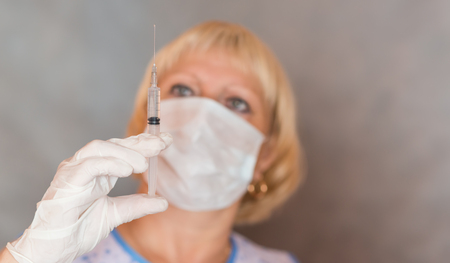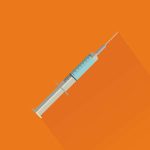1. Understanding Microneedling: What It Is and How It Works
Microneedling is a minimally invasive cosmetic procedure designed to rejuvenate the skin by stimulating collagen production. It involves the use of a device equipped with fine needles that create tiny micro-injuries on the skin’s surface. These controlled injuries trigger the body’s natural healing process, resulting in smoother, firmer, and more youthful-looking skin.
How Microneedling Works
The microneedling process follows a simple yet effective mechanism:
- Micro-Injuries: The device creates microscopic punctures in the skin, which are virtually painless due to numbing creams applied beforehand.
- Collagen and Elastin Production: These micro-injuries activate the body’s wound-healing response, boosting collagen and elastin levels—two essential proteins responsible for maintaining skin firmness and elasticity.
- Cell Regeneration: As the skin heals, new cells replace damaged ones, improving texture, reducing scars, and minimizing fine lines.
- Enhanced Absorption: The tiny channels created during treatment allow skincare products like serums and moisturizers to penetrate deeper into the skin for better results.
Benefits of Microneedling
This treatment is popular for its wide range of benefits, making it an excellent choice for individuals looking to enhance their skin without undergoing surgery. Below is a table outlining some key advantages of microneedling:
| Benefit | Description |
|---|---|
| Reduces Fine Lines & Wrinkles | Stimulates collagen production to smooth out aging signs like crow’s feet and forehead lines. |
| Evens Skin Tone & Texture | Diminishes hyperpigmentation, acne scars, and rough patches for a more even complexion. |
| Shrinks Pores | Tightens pores by increasing collagen around hair follicles, leading to smoother skin. |
| Treats Acne Scars | Aids in breaking down scar tissue and promoting new cell growth for clearer skin. |
| No Downtime Required | A non-surgical procedure with minimal recovery time, allowing patients to resume daily activities quickly. |
The Science Behind Collagen Stimulation
The key to microneedling’s effectiveness lies in its ability to stimulate collagen production. Collagen is a structural protein that keeps the skin firm and youthful. As we age, collagen production decreases, leading to sagging skin and wrinkles. By creating controlled micro-injuries, microneedling encourages the body to produce new collagen fibers, effectively reversing these signs of aging.
The Three Phases of Skin Healing After Microneedling
- Inflammation Phase: The body responds to micro-injuries by sending blood and healing factors to the treated area.
- Tissue Remodeling Phase: Fibroblasts produce new collagen and elastin fibers, strengthening the skin structure.
- Maturation Phase: Over time, new cells replace old ones, revealing healthier, rejuvenated skin.
This scientifically backed process makes microneedling a highly effective treatment for improving overall skin quality without requiring invasive procedures or long recovery periods.
2. Key Benefits of Microneedling for Skin Health
Microneedling is more than just a trendy skincare treatment—it offers a range of benefits that can help improve your skin’s overall health and appearance. Whether youre looking to smooth out fine lines, fade acne scars, or enhance your skin’s natural glow, microneedling can be an effective solution. Below, we explore the key advantages of this non-surgical facial rejuvenation treatment.
Improves Skin Texture and Tone
One of the most noticeable benefits of microneedling is its ability to refine skin texture. By stimulating collagen production, it helps create smoother, more even-toned skin. If you struggle with rough patches or uneven pigmentation, microneedling can promote a more balanced complexion.
Reduces Fine Lines and Wrinkles
Aging leads to the natural decline of collagen and elastin, which are essential for maintaining youthful skin. Microneedling encourages the body’s healing process, triggering new collagen formation that helps reduce the appearance of fine lines and wrinkles over time.
Minimizes Acne Scars and Hyperpigmentation
If you have lingering acne scars or dark spots from sun damage, microneedling can help break up scar tissue and encourage fresh cell turnover. This makes it an excellent option for those looking to reduce hyperpigmentation and achieve a clearer complexion.
Enhances Product Absorption
The microchannels created during a microneedling session allow skincare products like serums and moisturizers to penetrate deeper into the skin. This enhances their effectiveness, making your skincare routine even more powerful.
Key Benefits of Microneedling at a Glance
| Benefit | Description |
|---|---|
| Smoother Skin Texture | Reduces roughness and evens out skin tone |
| Wrinkle Reduction | Diminishes fine lines by boosting collagen production |
| Scar Improvement | Helps fade acne scars and other blemishes |
| Pigmentation Correction | Evens out dark spots caused by sun exposure or acne |
| Better Skincare Absorption | Allows serums and treatments to penetrate deeper into the skin |

3. What to Expect During a Microneedling Session
Microneedling is a minimally invasive treatment, but knowing what to expect can help you feel more comfortable and prepared. Here’s an overview of the process, from preparation to post-treatment care.
Preparation: Getting Ready for Your Session
Before your microneedling appointment, there are a few steps to ensure the best results:
- Avoid sun exposure and tanning beds for at least 24 hours before treatment.
- Refrain from using retinoids or exfoliating products for a few days prior.
- Stay hydrated and keep your skin moisturized leading up to your session.
- If recommended by your provider, avoid blood-thinning medications or supplements that could increase bruising.
The Microneedling Procedure: Step-by-Step
The actual microneedling session typically lasts about 30 to 60 minutes, depending on the treatment area. Here’s what happens during the procedure:
| Step | Description |
|---|---|
| Cleansing | Your provider will cleanse your face to remove any makeup, oil, or debris. |
| Numbing | A topical numbing cream is applied to minimize discomfort. This takes about 20–30 minutes to take effect. |
| Treatment | The microneedling device is gently moved across your skin, creating tiny micro-injuries that stimulate collagen production. |
| Serum Application | A soothing serum or growth factor solution is applied to enhance healing and hydration. |
| Post-Treatment Care | Your provider may apply a calming mask or moisturizer before giving you aftercare instructions. |
Post-Treatment Care: Ensuring Optimal Healing
The first few days after microneedling are crucial for healing and maximizing results. Here’s how to take care of your skin post-treatment:
- Avoid direct sun exposure and always wear SPF 30 or higher.
- No makeup for at least 24 hours to prevent irritation.
- Use gentle, hydrating skincare products—avoid harsh exfoliants and active ingredients like retinoids for a few days.
- Your skin may be slightly red or feel sensitive for a day or two; this is normal and should subside quickly.
- Stay hydrated and avoid excessive sweating or heat exposure (like saunas) for 48 hours.
If you follow these steps, you’ll help your skin recover smoothly while enhancing the benefits of microneedling.
4. Microneedling vs. Other Skin Rejuvenation Treatments
When considering skin rejuvenation treatments, it’s important to compare microneedling with other popular options like chemical peels and laser therapy. Each treatment has unique benefits, and the best choice depends on your skin type, concerns, and desired results.
Microneedling vs. Chemical Peels
Chemical peels use acids to exfoliate the outer layers of the skin, promoting new cell growth. While both treatments improve skin texture and tone, microneedling works by stimulating collagen production from within, whereas chemical peels focus on surface-level renewal.
| Treatment | How It Works | Best For | Downtime |
|---|---|---|---|
| Microneedling | Tiny needles create micro-injuries to stimulate collagen production. | Fine lines, acne scars, large pores, overall skin rejuvenation. | Minimal (redness for 24-48 hours). |
| Chemical Peels | Chemicals exfoliate the top layers of skin to remove dead cells. | Dull skin, hyperpigmentation, mild acne scars. | Mild to moderate (peeling for a few days). |
Microneedling vs. Laser Therapy
Laser therapy uses focused light energy to target deeper layers of the skin. It can be highly effective for pigmentation issues and deep wrinkles but may come with more downtime compared to microneedling.
| Treatment | How It Works | Best For | Downtime |
|---|---|---|---|
| Microneedling | Tiny needles create controlled micro-injuries to boost collagen. | Aging signs, acne scars, uneven texture. | Minimal (redness for 24-48 hours). |
| Laser Therapy | Pulses of laser energy resurface skin by removing damaged layers. | Sun damage, deep wrinkles, severe pigmentation. | Mild to significant (few days to weeks depending on intensity). |
Which Treatment Is Right for You?
The best treatment depends on your individual skin concerns and tolerance for downtime. If you’re looking for a minimally invasive option with little recovery time, microneedling is a great choice. However, if you need more intensive correction for pigmentation or deep wrinkles, chemical peels or laser therapy might be better suited for your needs.
5. Who Is a Good Candidate for Microneedling?
Microneedling is a versatile skincare treatment that can benefit many people looking to improve their skin’s texture and appearance. However, it’s not suitable for everyone. Understanding whether you’re a good candidate for microneedling can help you make an informed decision before scheduling a session.
Ideal Candidates for Microneedling
Microneedling works best for individuals with the following skin concerns:
| Skin Concern | How Microneedling Helps |
|---|---|
| Fine Lines and Wrinkles | Stimulates collagen production to smooth out lines and improve skin elasticity. |
| Acne Scars | Breaks down scar tissue and promotes new skin cell regeneration. |
| Hyperpigmentation | Evens out skin tone by accelerating cell turnover. |
| Larger Pores | Tightens pores by increasing collagen around them. |
| Sagging Skin | Boosts firmness by encouraging collagen and elastin production. |
Who Should Avoid Microneedling?
Certain individuals may not be ideal candidates for microneedling due to potential risks. You should avoid this treatment if you have:
- Active acne or infections: Microneedling can spread bacteria, worsening breakouts or infections.
- Keloid-prone skin: If youre prone to keloid scarring, microneedling may trigger excessive scar formation.
- Eczema or psoriasis: Skin conditions like eczema and psoriasis can become irritated by microneedling.
- A history of poor wound healing: If your skin takes longer than usual to heal, microneedling might not be suitable.
- A recent cosmetic procedure: If youve had Botox, fillers, or laser treatments recently, consult your dermatologist before undergoing microneedling.
When to Consult a Dermatologist?
If youre unsure whether microneedling is right for you, its always best to consult a dermatologist. A professional can assess your skin type, medical history, and specific concerns to determine if this treatment will be safe and effective for you. They can also recommend alternative treatments if microneedling isn’t the best option for your needs.


